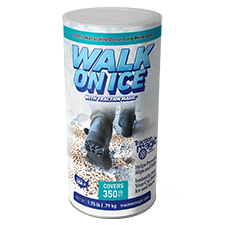What To Do When Gravel Is Stuck In A Concrete Driveway
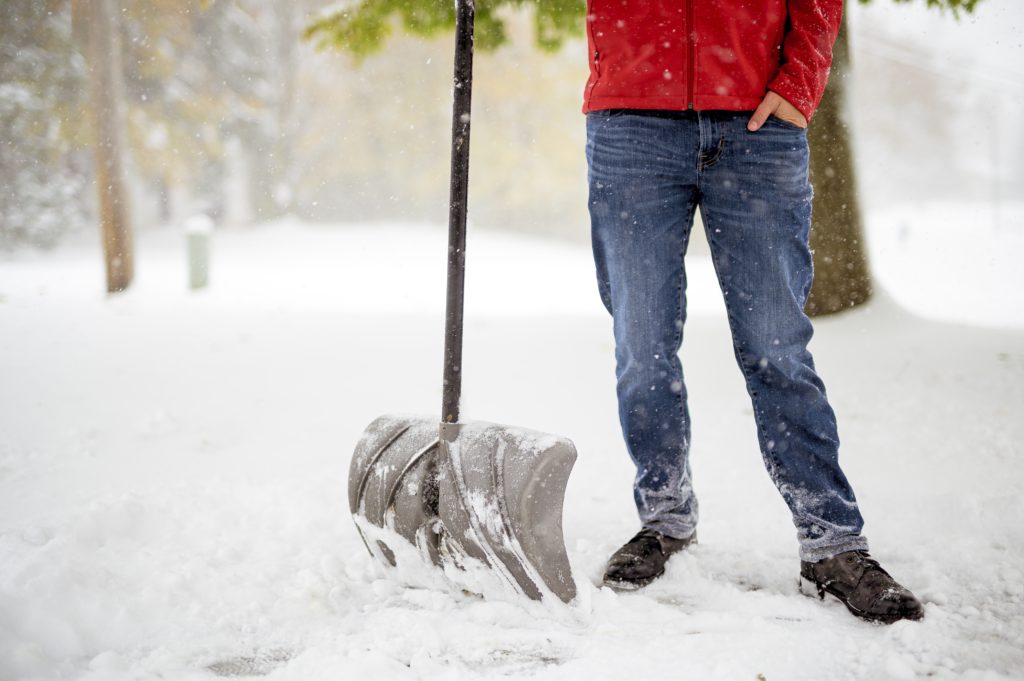
One thing you do not want is an uneven driveway, especially when winters are fast approaching. We look for solutions on- how to melt ice quickly during winters, but if you have an uneven driveway, the melted ice will penetrate the core. It will cause more damage.
Several products are on the market to help you melt ice on concrete. However, an environmentally friendly one will help you manage your concrete driveway and vegetation and not harm anyone at home.
What to Do When Gravel Is Stuck in a Concrete Driveway
Gravel embedded in your concrete driveway is more than an eyesore; it can lead to long-term structural damage and safety hazards. This common issue arises from gravel migration caused by poor edging, heavy traffic, or insufficient maintenance. Fortunately, there are effective ways to remove embedded gravel, prevent future issues, and ensure your driveway remains durable and visually appealing.
This guide covers everything from how to remove ice from driveway without salt to preventative measures, environmental considerations, and maintenance tips.
Keeping this in mind, Safe Thaw came up with their 100% natural urea-modified product, different from the remaining products in the market. It is salt-free, chloride-free, and does not harm your surroundings. With special inhibitors, surfactants, and glycols, it has unique ice melting boosters that are not present in any other product. It is different from the other urea-containing products on the market.

But while you decide what can I use to melt ice on concrete, the biggest question is when the gravel gets stuck on the concrete driveway. It will not only hinder the process of evenly removing the ice, but it can also become a cause of concern for the cars.
Preventative Measures to Avoid Gravel Embedding
The best way to deal with embedded gravel is to prevent it from happening in the first place.
Install Effective Edging
Edging plays a critical role in keeping gravel contained within designated areas. Use sturdy materials like metal or concrete barriers to define the borders of gravel driveways or pathways, preventing spillover onto the concrete surface.
Choose the Right Gravel Size
Larger gravel pieces are less likely to migrate compared to smaller ones. Opt for sizes like #57 gravel, which stays in place better under heavy traffic and reduces the chances of embedding.
Regular Cleaning
Sweep gravel-prone areas frequently to remove loose stones before they become embedded. A leaf blower or broom can help keep the concrete surface clean and reduce buildup.
Remove It Manually
You can attempt to remove the gravel manually with the help of a garden spade or an iron rake. It will require slight effort, and you won’t have to worry about how to melt ice quickly either. Most gravel left on the concrete driveway can cause the concrete to wear and tear quicker because of the small gap. It is better to remove the patch immediately to avoid any complications later.
Replace Cracked Concrete
If the gravel stuck on your concrete driveway is causing it to crack due to pressure, it is time to call the professionals. With their special tools, they can quickly remove the gravel on the concrete without causing much damage. If there is any concrete damage, it is advisable to replace the cracked concrete with a fresh one.
Sprinkle Dry Cement
You can alternately sprinkle dry cement on the gravel and roll it over with a cement roller to even the surface. It will no longer cause any problem while driving into your garage. Once you do this, applying ice melt during winters becomes easier.
Environmental Considerations in Gravel Removal
While removing gravel from a concrete driveway, it’s essential to consider the environmental impact of your methods.
Avoid Harsh Chemicals
Some gravel removal products contain harmful chemicals that can leach into the soil and affect nearby vegetation. Stick to eco-friendly techniques, such as using a pressure washer or biodegradable cleaning solutions.
Proper Gravel Disposal
Collected gravel should not be discarded carelessly. Instead, reuse it for landscaping or repair areas with thin gravel layers to minimize waste.
Minimize Soil Disruption
When removing gravel near the edges of your driveway, ensure you don’t disrupt the surrounding soil, which can lead to erosion or destabilization of nearby plants.
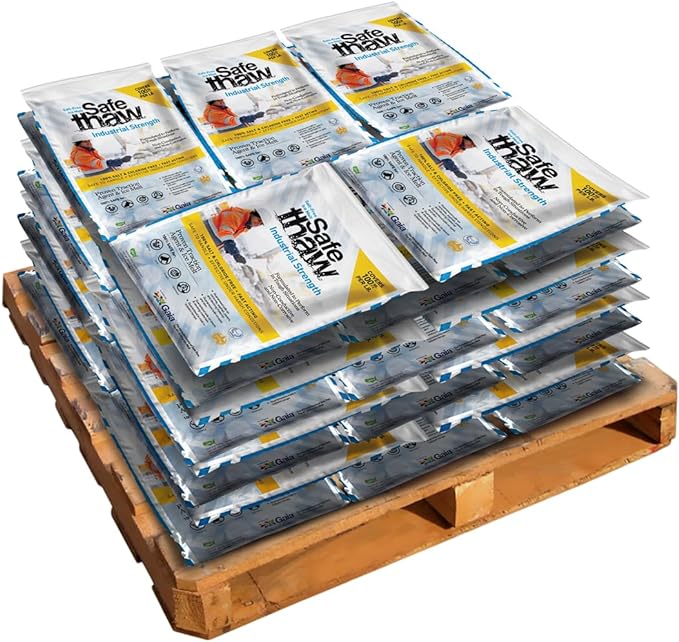
40 Bags
Safe Paw Thaw Industrial Strength Salt-Free Pet Safe Snow Ice Melter and Traction Agent for Concrete, Asphalt, Decks, Lawns, and More, 43 Pound Bag- 40 Bags
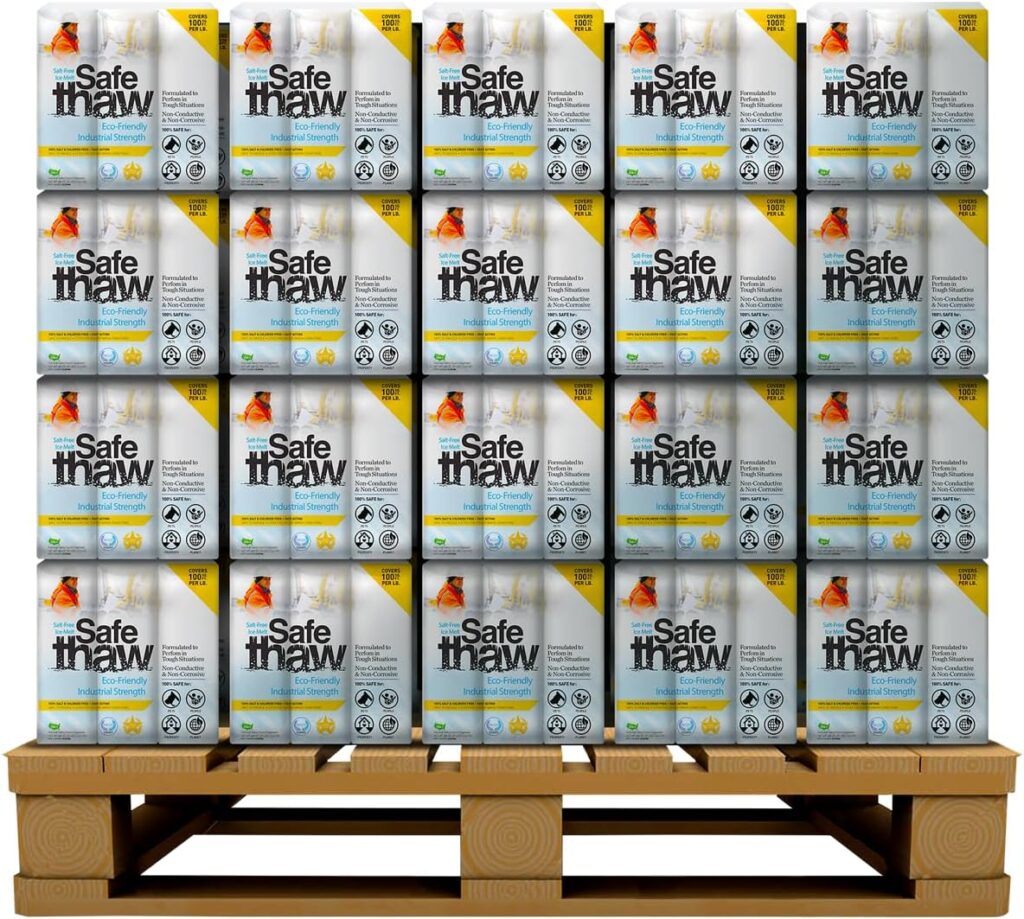
100 Boxes
Safe Thaw Industrial Strength 100% Salt/Chloride-Free, Pet/Paw-Safe Snow & Ice Melter and Traction Agent. Use on Concrete, Asphalt, Roofs & On Any Surface, 30 Pound FlexiPail- 100 Boxes
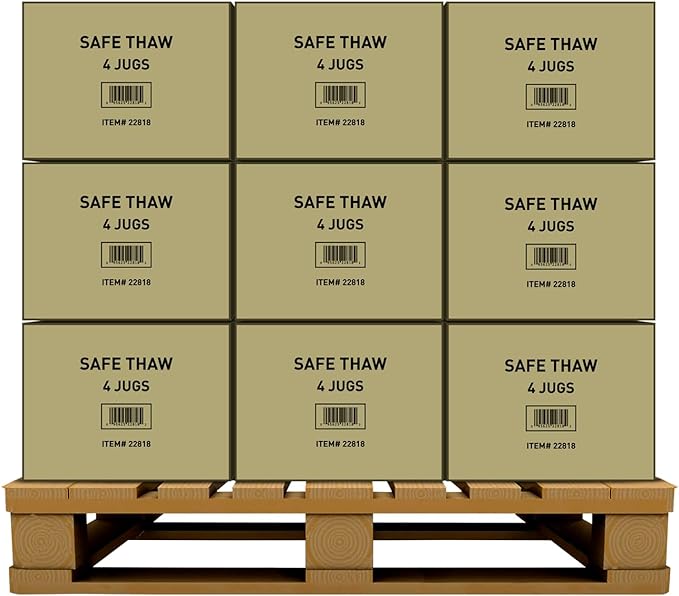
105 Jugs
Safe Thaw Concrete Safe 100% Salt-Free, Pet Safe Snow and ice Melter, Industrial Strength, Chloride-Free, and Traction Agent. Use on Asphalt, Roofs & On Any Surface, 10 Pound Jug- 105 Jugs
Safety Precautions During Gravel Extraction
Removing embedded gravel requires attention to safety to protect yourself and the integrity of the concrete driveway.
Wear Protective Gear
Always use personal protective equipment (PPE), such as gloves, safety goggles, and steel-toed boots, to prevent injuries from flying gravel or sharp tools.
Stabilize Surrounding Structures
Ensure that any adjacent structures, such as retaining walls or edging materials, are stable before starting the removal process. Unstable surroundings can lead to accidents or further damage.
Use the Right Tools
For deep gravel removal, opt for tools like flathead screwdrivers, putty knives, or pressure washers with adjustable settings. These tools provide precision without damaging the concrete surface.
Long-Term Maintenance to Prevent Gravel Accumulation
Maintaining your driveway is key to avoiding gravel embedding and preserving its structural integrity.
Routine Inspections
Check your driveway regularly for loose gravel, cracks, or signs of erosion. Early detection allows you to address minor issues before they escalate.
Timely Repairs
Fill cracks or divots as soon as they appear to prevent gravel from becoming embedded. Use concrete patching products designed for quick and effective repairs.
Resealing the Surface
Sealing your concrete driveway adds an extra layer of protection against gravel embedding and other damage. Choose a high-quality sealant that is designed for heavy-duty use and apply it every 2–3 years.
How Concrete Driveway Thickness Impacts Gravel Issues
The thickness of your concrete driveway plays a significant role in its ability to withstand gravel embedding and other stresses.
Standard Thickness Recommendations
- Residential driveways typically require a thickness of 4–6 inches.
- Driveways with heavy traffic or large vehicles may need up to 8 inches.
The Role of Reinforcement
Incorporating reinforcement materials, such as steel rebar or wire mesh, enhances the driveway’s durability. Thicker, reinforced concrete is less likely to crack, reducing the chances of gravel embedding over time.
Can Cat Litter Melt Ice?
While gravel and ice often coexist on winter driveways, homeowners sometimes wonder: Does cat litter melt ice?
Traction, Not Melting
Does cat litter melt ice? No, Cat litter doesn’t melt ice but provides traction on slippery surfaces. It’s a useful alternative when you need a quick fix for icy spots without using chemical deicers.
Better Alternatives
For both ice melting and gravel management, consider eco-friendly deicers like Safe Thaw. These products melt ice effectively while being safe for concrete and the environment.
What Can I Use To Melt Ice On Concrete?
After you have solved the problem of gravel being stuck on your driveway, you can use natural ice melt products such as Safe Thaw to ensure your driveway does not spoil or stain during the remaining months. It will help your driveway last longer without any hassle.
100% salt & chloride-free, fast acting Ice Management Solution
Conclusion
Dealing with gravel stuck in a concrete driveway is manageable with the right techniques and preventative measures. By installing proper edging, choosing appropriate gravel sizes, and performing routine maintenance, you can protect your driveway’s structural integrity and appearance.
Understanding the importance of concrete driveway thickness and opting for eco-friendly methods to address gravel and ice issues ensures long-term durability. Whether you’re removing gravel, learning how to remove ice from driveway without salt, or exploring alternatives like cat litter, a proactive approach will save you time, money, and effort.
Keep your concrete driveway in top shape by combining practical solutions with regular care—your investment will thank you!
Try Also Our Other Winter Safety Products:
Safe Paw
The Original and #1 Selling Pet and Child Safe Ice Melt for over 20 years. Guaranteed environmentally safe –It won’t harm animals or children, and it won’t damage your property. That’s Safe Paw. Safe Paw can change how winter affects our planet.

Walk On Ice
The handy disposable canister can be taken everywhere, with the same 100% naturally occurring minerals that provide instant traction on ice or snow. Use it on sidewalks, steps, or as an instant traction agent for your car.
